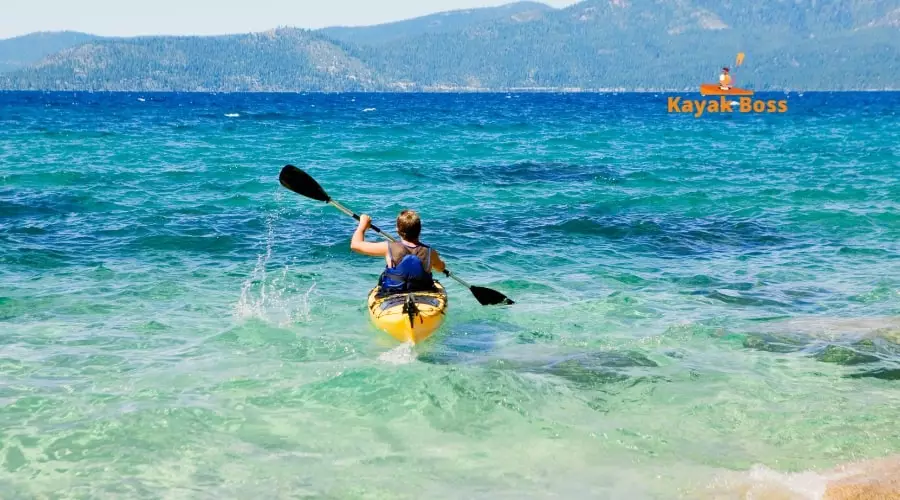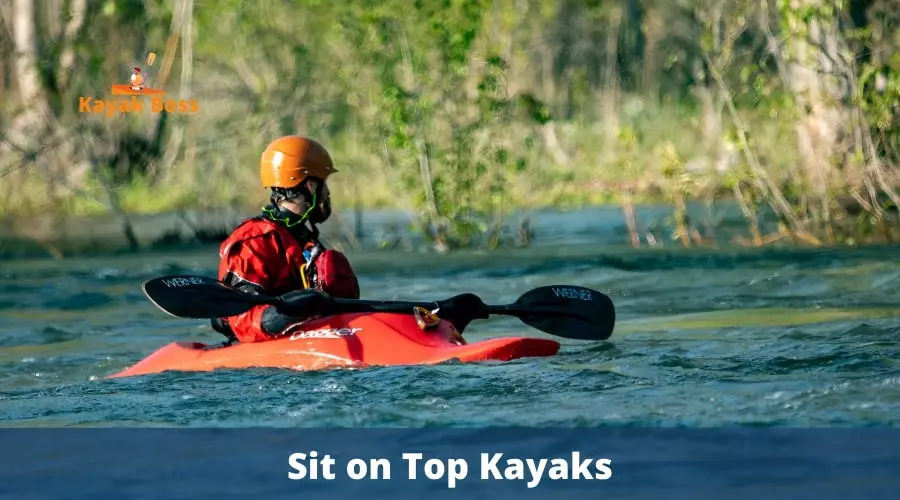“Should I purchase a sit-on-top or a sit-inside kayak?” is one of the most popular queries you’ll receive in the kayak business. It is one of the main decisions you must make when purchasing a kayak. The fact is that selecting between a sit-on-top and a sit-inside kayak is primarily a matter of personal choice. Still, there are a few additional considerations to explore.
Although there are some significant variations between sit-inside and sit-on-top kayaks, many of the same components are used in both. Let’s say you’re considering getting a kayak but unsure which one to get. In that case, this article will walk you through the benefits and drawbacks, as well as the commonalities and dissimilarities between Sit on Top vs. Sit in Kayak Stability.

The main difference between “Sit on Top vs. Sit in Kayak” is two kayaking positions. When sitting in a kayak, the kayaker is in a seated position and their legs are inside the boat. When sitting on top of a kayak, the kayaker is standing and their legs are outside the boat.
Sit In Kayaks
Sit-inside kayaks, or SIK for short, like the Lifetime Payette Kayak, are more conventional in appearance. The paddler gets into the open cockpit and sits within the Kayak’s hull, his legs under the deck. This kind of Kayak allows you to support your knees against the inside walls of the hull to assist in convenient and efficient paddle strokes, based on the Kayak’s build. Many sit-ins may accommodate a skirt as well.
In a sit-inside kayak, skirts are used to seal or wrap the cockpit aperture. The skirt is worn around the waist of the paddler. The kayaker takes a seat in the Kayak and extends the skirt cloth over the cockpit rim, sealing the hull from within. This is ideal for paddling in the winter or in areas where the water is cold. Doing so will keep the water from gushing into the Kayak or onto the legs of the paddler.
Sit-in kayaks are more prevalent in areas with a cold climate or a short summer. The probability of getting soaked in water on SIK is less than that on sit on top Kayak, given that you accidentally flip the kayak. However, if your Kayak flips over, you’ll have to swim (or submerged paddle) to shore to empty it.
It’s considerably more problematic to flip a kayak than you would assume. Because of the “flipping factor,” several people are concerned about SIK. To be honest, flipping your Kayak over is a difficult task. Most recreational kayaks, such as Lifetime kayaks, are built to be sturdy. Whether it’s a sit-on-top or sit-inside kayak, the flipping factor will be determined by the form and structure of the hull rather than the type of Kayak. Don’t worry; if you accidentally tip it over, you won’t be stuck. The paddler will jump out of the Kayak and onto the water’s surface as quickly as possible.
Pros
These are a few of the advantages of a SIK:
- Steady, interesting, and uncomplicated to use.
- The cockpits are generally large so that you won’t feel cramped.
- Keeps you warm by shielding your lower body from the wind.
- Convenient to paddle on cold water.
Cons
Disadvantages include:
- Challenging to move in and out of water.
- If the Kayak flips, it fills with water and is tough to recover.
Sit inside vs. sit on top kayaks. Which is better?
Sit on Top Kayaks

Sit-on-tops, often known as SOTs, are becoming increasingly popular. The paddler can sit on top of the kayak deck in this design, similar to the Lifetime Lotus and Monterey. There is no “inside” that the paddler may occupy. Only storage hatch holes will provide access to the interior of the Kayak if any at all. All of it will be hooked on the Kayak’s main deck from the footwells to the seatback.
It’s significantly more challenging to remain dry while paddling a SOT. For each surge, ripple, or splatter, the paddler gets more and more drenched. Water splashes up onto the paddler’s body since there is no cockpit or deck space. As a result, SOTs are particularly popular in hot climates and tropical regions.
Since it is simple to dive into the water for a short dip and then jump back into the kayaks, these kayaks are ideal for hot weather. Easy to get into your SOT from the water, unlike with a sit-inside kayak. You may adjust yourself for paddling by pulling yourself back up onto the deck of your SOT. Scupper plugs can be used to make the ride a little dryer.
The self-bailing drain holes seen on SOT kayaks will be covered with scupper plugs. The scupper hole’s function is to allow splashed water on the deck to drain back out rather than pool beneath the paddler. Small splashes will be prevented by plugging these openings, however, any water that finds its way on the deck may not be able to drain out itself.
Pros
The benefits of a SOT Kayak include the following:
- User Friendly
- Steady, accessible, and simple to get in and out.
- Water can flow out the scupper holes, preventing the Kayak from filling up.
Other factors
After you’ve selected whether you want a sit-on-top or a sit-inside kayak, you’ll require choosing the length and material.
- Length– The longer and narrower the kayak, the quicker it will move, and the broader the Kayak, the steadier; however, it will move slowly. As they’re broad and sturdy, most sit-on-top kayaks are classified as recreational kayaks.
- Material– Usually, kayaks feature a robust shell composed of long-lasting plastic that doesn’t require any maintenance. Composite materials, like fiberglass, carbon, and Kevlar are also used to build Kayaks, which makes it very lightweight.
Type of Kayak best suited for Fishing
Due to the ease of maintenance, affordability, and storage possibilities, kayaks are becoming increasingly popular for Fishing. However, due to greater stability, gear storage, easier access to gear, and most significantly, its unsinkability, the SOT is the most outstanding choice for Fishing. Of course, it comes down to personal preference as a kayak fisherman, but the SOT appears to be superior to the SIK in every critical category.
It will work nicely for you if you’re a speed fisherman with little time to get out on the water. The SIKs is quicker and more maneuverable than their rivals, so if you have an hour to catch some fish, you’ll be able to paddle around the lake swiftly and efficiently, hitting all of the prime locations.
However, if you’re likely to be traveling through whitewater fast enough to require a SIK, you shouldn’t be fishing with it.
Conclusion
You’ll have a great time paddling whether you select a sit-inside or sit-on-top Kayak. Kayaks of both types are equally safe. Other design considerations, such as hull shape and size, will influence stability. The simplest approach to decide on purchasing a sit-inside or sit-on-top kayak is to consider about the water and atmospheric conditions you’ll be paddling in, as well as which design you prefer. Hopefully, with all of the information provided, this article on Sit on Top vs. Sit in Kayak Stability will assist you in selecting your Kayak.
